Is Tea Good For Plants? How to Use Tea Leaves for Fertilizer
Is Tea Good For Plants? How to Use Tea Leaves for Fertilizer. Yes, you heard that correctly. It sure is. Sharing how-to’s today!
Did you know you can share your black tea with your plants? It’s true. Both indoor plants and outdoor plants can ‘drink’ tea. Leave it to me to find another use for my leftover tea. So, is tea really good for plants? Let’s look a little deeper at how and why this works.
You may already know that I am an avid tea drinker. I’ve shared a few posts on my favorite teas and healthy honey that I love. Today, however, I thought I’d share with you how tea leaves, and tea water for that matter, can be an excellent choice for your plants.
Read on to see why it might be a good idea to start keeping your used tea bag or create a mini compost pile in your own kitchen.
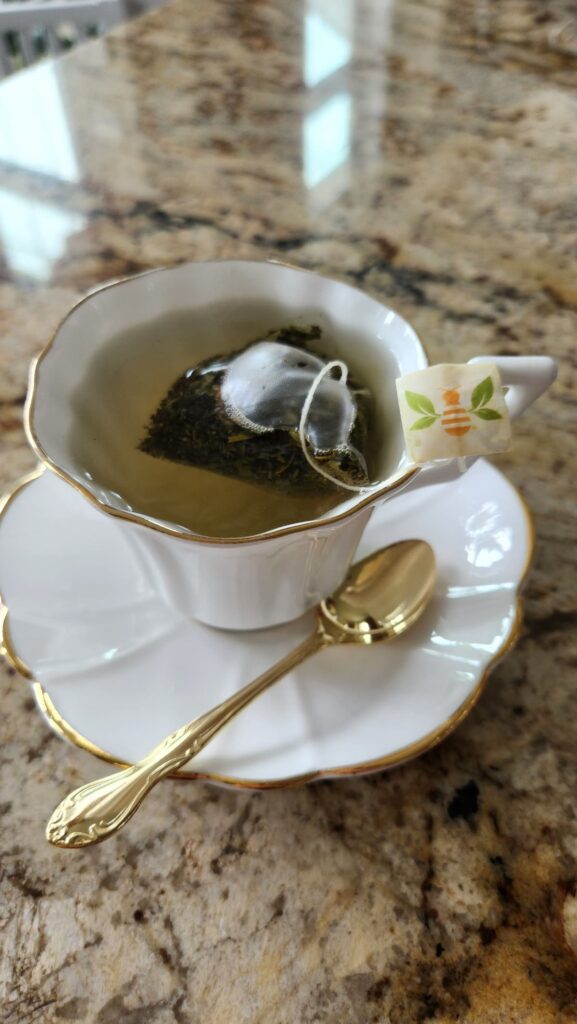
The science behind tea leaves
Organic matter is a huge contributor to healthy soil.
Since I’m not a scientist, I’ll keep this simple. Organic matter is a huge contributor toward healthier soil. The reason tea leaves are good is that the tannic acid in tea helps regulates growth and is used as a natural pesticide. Also found in tea are nitrogen and potassium.
Even more than in basic plant fertilizers.
Nitrogen helps with plant growth and encourages leafy growth, while phosphorus is one of the major plant nutrients in the soil, which is vital for young plants.
Basically using tea leaves as a natural fertilizer is a great way to boost your garden plants.
Coffee grounds and banana peels can do the same thing, although who wants to see brown banana peels in their garden?
The tea leaves for me at least blend in better. I like when things are purposeful, and they look good!
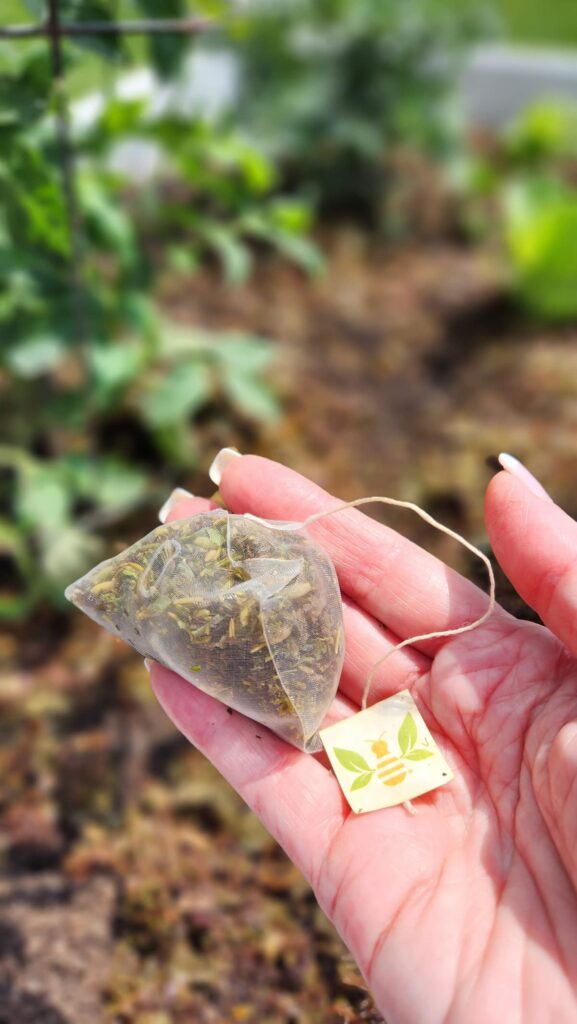
Which plants do not like tea?
Before you head out and pour your leftover tea on every plant let’s look at a few plants that do not like brewed tea.
List of plants that do not like tea
- Boston ivy
- Cacti
- Carnation
- Chrysanthemum
- Dahlia
- Daisies
- Geranium
- Baby’s breath
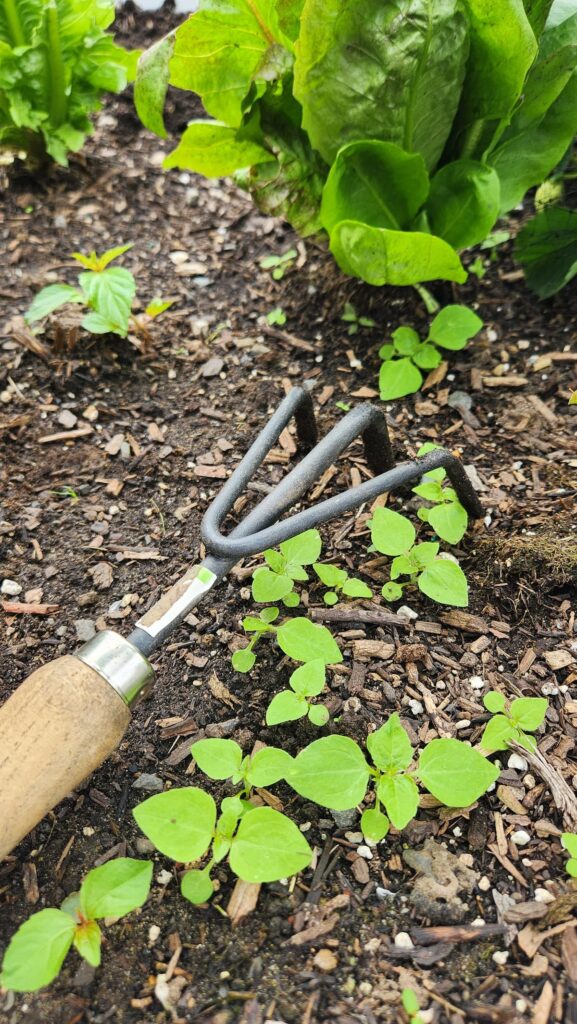
Is it okay to water plants with tea?
Yes, it is okay to water your plants with tea water. Although, this will depend on the type of tea you are going to use. If your tea is an herbal base and has additives or even sugar or milk added to it, it is not recommended to use herbal tea. Sugar will do more harm than good. The same goes for tea with honey or milk in it.
When using tea water aim for a good organic black, green, or oolong tea.
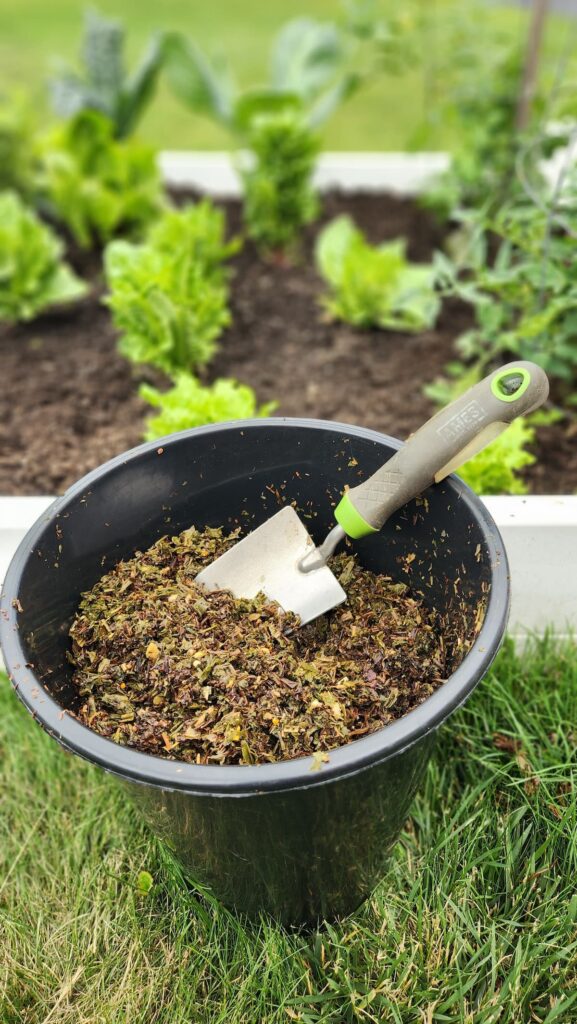
You may wonder where you get a bucket full of steeped tea leaves this large.
Head to your local teashop that serves whole-leaf tea and ask if they wouldn’t mind collecting you a bucket full. I’m sure they would be happy to accommodate your request. I asked my favorite tea shop, Saratoga Tea and Honey if they would please collect a bucket full of tea leaves for me.
I’m happy to say after just one week, they called me and the bucket was full. I was ready to be able to use it in my garden bed.
What kind of tea do you use for plants?
Types of tea to use for plants
The number one choice for types of tea to use for plants would be green tea leaves. Think of it this way. Green tea is super high in antioxidants for people. Taking that into consideration, it is optimal for your plants as well. I’ve found rather than cutting and snipping small tea bags, using loose tea is the easiest for adding to your plant soil.
Using black tea or oolong tea is also highly recommended.
Depending on the type of herbal tea, such as pure chamomile tea, this will help your growth rate as well. Compost tea such as Chamomile is also a natural insecticide. Basically use the purest form of herbal tea, without any additives.
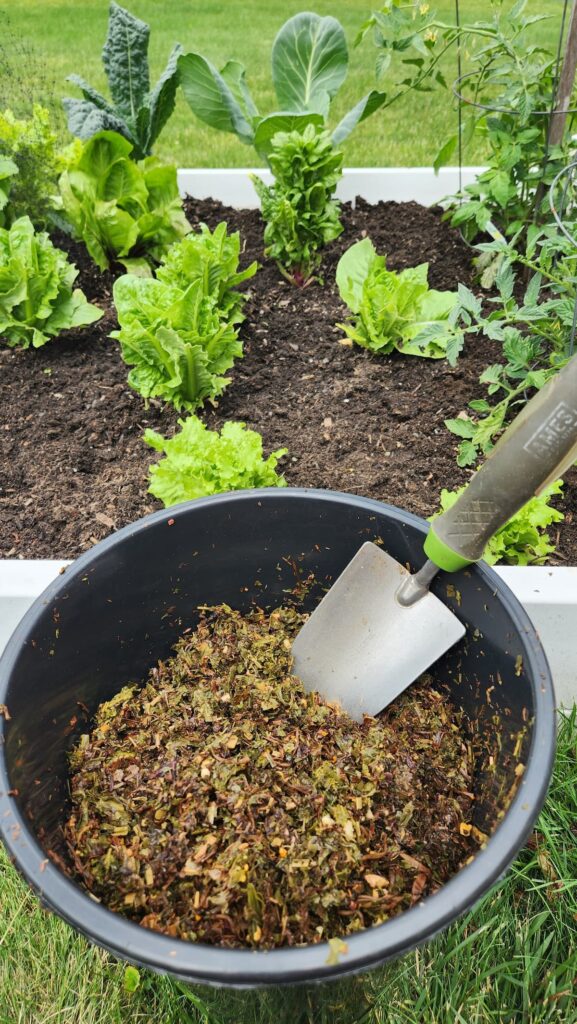
Types of tea leaves
Several years ago I was fortunate enough to head to Montreal with Saratoga and Honey Co. to attend tea school at Camella Sinensis School. It was a fabulous three days spent tasting each type of tea.
Over the three-day period, I tasted approximately 300 teas. From white tea, and green tea, to Oolong, Black, and Pu’er tea. The gentlemen that taught the classes were experts in their field.
We learned about harvesting, withering, rolling, drying, and the oxidation process. And then, we moved on to the temperatures and times of proper steeping. A properly steeped cup of tea is all about time, and temperature.
One thing that impressed me was learning about the ceremony of tea. Each step and gesture has its own meaning, purpose, and thoughtfulness associated with it.
When I came away from this experience, I was in awe of the tea world. Being very similar to the world of wine, I had a new appreciation of where tea comes from, as well as, how tea is processed and carried down steep mountainsides on harvesters’ backs. Then take into consideration the time it takes with withering or rolling. Often times this process is done ten times. We should be paying much more for this delicious beverage.
How do you use tea as fertilizer?
A few simple steps to using tea as fertilizer
1. Brewing tea
Start by setting aside your hot tea or cold tea water that is left in your cup. One option is you set aside a pitcher and each day pour the leftover tea water in this. If you have finished the whole cup you can still keep the leftover loose-leaf tea grounds in a small compost bin.
2. Loose Leaves
Once you’ve collected enough of the loose leaves it’s time to place them on top of the soil and in your garden beds.
For small indoor potted plants, you can cut the tea bag after using it and sprinkle a small amount of tea leaves in the pot.
Prior to covering the soil with the leaves in your garden bed, be sure to weed thoroughly to rid your garden of unwanted weeds.
Simply placing the fresh tea leaves around the base of the plant will work well. It only takes a few minutes to disperse your leaves. As it decomposes the essential nutrients will steep into the soil and improve the soil quality of your plant.
3. Moisture retention
Another option to retain moisture is by burying the tea leaves around the roots of the plants. This may be done when planting a new plant, sprinkle the leaves in the soil around the roots of the plants.
That’s it! Isn’t that simple?
Either method is also an excellent way to improve your house plants as well.
4. Alkaline in soil
When improving the soil’s ph using a ph soil tester is the easiest option. One may be purchased online or in any garden shop. The aim is to see how your garden soil absorbs water and nutrients. If the soil does not have the correct nutrient levels the plant fertilizer will not benefit your plants.
I use this soil tester which I find easy to use.
Shop & Source

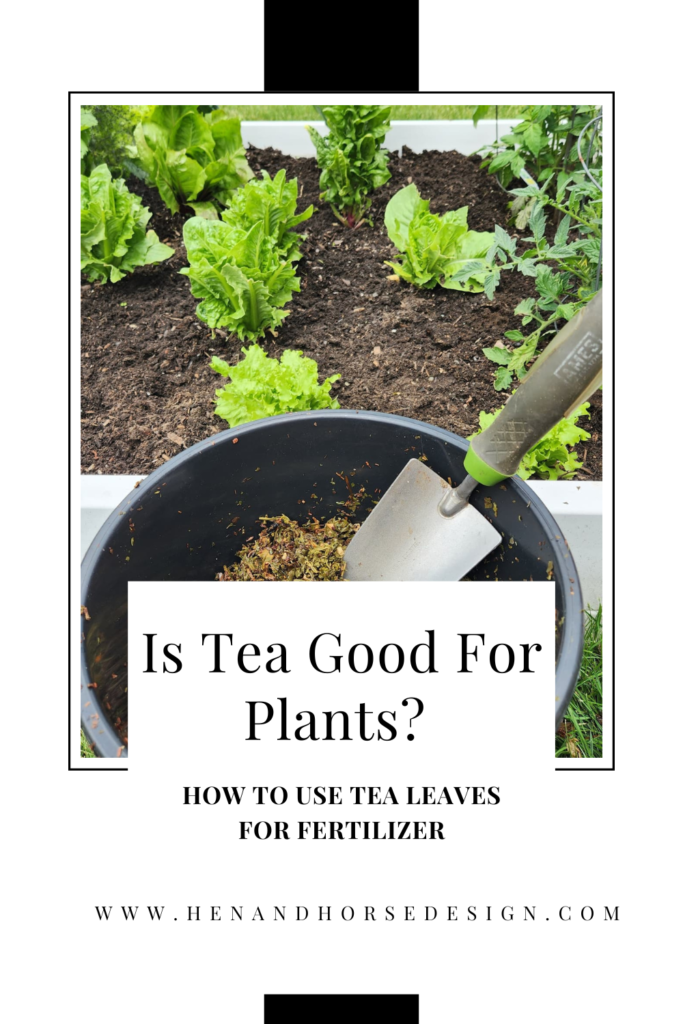
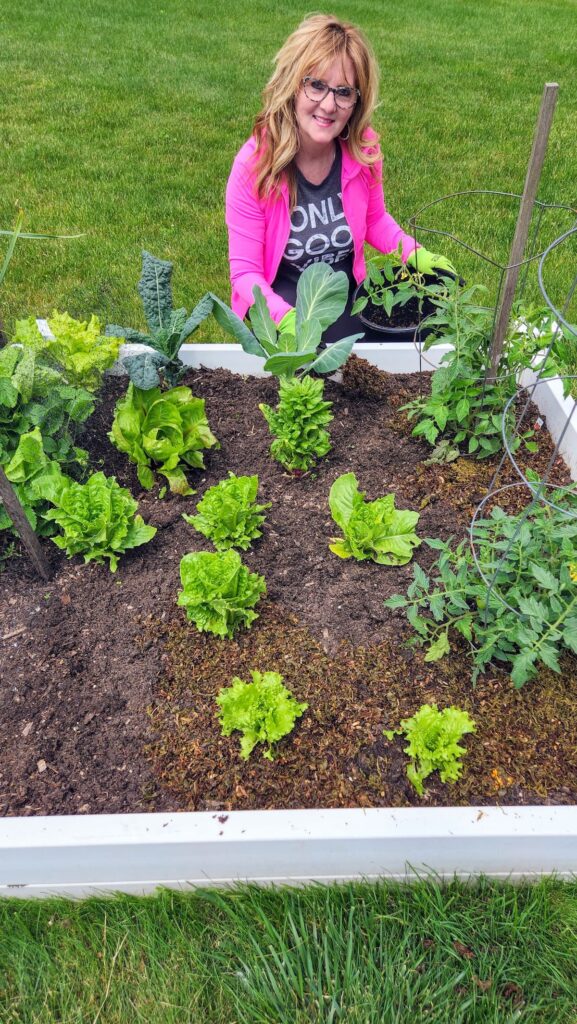
A great way to give your garden a boost. I hope you try it out. If so, please come back and let me know how your garden is doing. It helps out my blog and I love hearing from you. Thank you!
Now that you are done, go ahead and enjoy a nice cup of tea and admire your garden. Sharing your tea time with your plant babies will make them happy! They will love you for it.



Well, who knew! I have used coffee, eggshells, bananas, but not tea. I will give it a try. I am working on a DIY fertilizer and will link your post.
Yes, tea leaves are full of nutrients for your soil and garden! Thank you for sharing!
Wow, I had no idea. Thanks for sharing. Hugs to you.
I have used coffee grounds and eggshells but never tea leaves! It makes total sense and I love your explanation. (as well as the list of plants that don’t like it.) Thank you! (And you are just too cute sitting by your raised bed! Love it!)
Thanks Missy. Fortunately I have an abundance of tea leaves available! 🙂
I had no idea that you could use tea this way but it certainly makes sense. So glad you included the ones that don’t as I see dahlias on that list and I sure wouldn’t want to upset them! Great post Susan
Thank you Crystal. Yes, the benefits to tea are far reaching. Filled with nutrients to drink and help our plants!
just wondering aloud…..I don’t really drink tea but I’m curious about using it so should it be used as in steeped or dry right outta the tin? thanks!